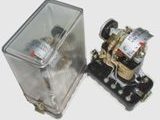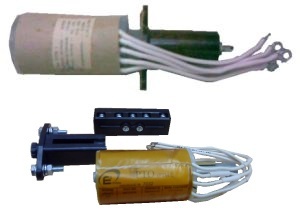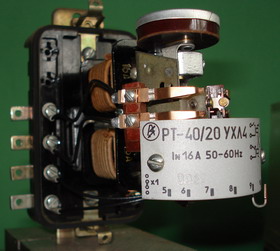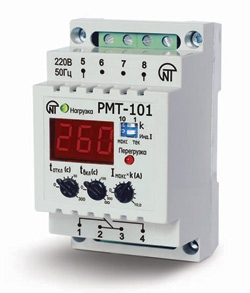Overcurrent relay
 Existing industrial electrical networks must protect their circuits from overloads and short circuits. For this purpose, relay protection, which includes an overcurrent relay, is used to protect power transformers, aggregates, electric motors of pump drives and many other industrial equipment.
Existing industrial electrical networks must protect their circuits from overloads and short circuits. For this purpose, relay protection, which includes an overcurrent relay, is used to protect power transformers, aggregates, electric motors of pump drives and many other industrial equipment.
Each element of the circuit, be it a wire, power source (power transformer), current receiver (electric motors, measuring devices, heaters, etc.) has its own maximum permissible load current. Exceeding, which can lead to insulation breakdown or wire melting, turn-to-turn circuit in the electric motor, transformer overload. This means that it causes an emergency mode of operation, which causes the entire network to fail.
To prevent the operation of electrical appliances in emergency mode in production, they are widely used overcurrent relay.
Purpose, device and classification of current relays
As the name suggests, this relay is designed to limit the maximum current in the network, disconnect consumers when the threshold value of the consumed current is exceeded. The relay in question, installed in the relay cabinet of the power transformer, besides protecting it from overcurrent, also provides protection against short-circuit currents arising from any technical malfunction.
Relay protection it has a definite and very necessary property — selectivity. Which is the ability to switch off the damaged part of the circuit as locally as possible. That is, the nearest switch. Without tripping the circuit breaker, energizing the entire circuit and leaving the rest of the circuit in operation. This property is excellently provided by an overcurrent relay.
Current relays are classified as primary and secondary. The primary current relays are built directly into the circuit breaker drive as an integral part of it. They are mainly used in networks with voltage up to 1 kV.
The secondary relays are connected through a current transformer that is installed directly on the power bus or the core of the power cable. The current transformer converts the current down to the value sensed by the current relay. And since the current flowing to the relay contacts is proportional to the current flowing in the controlled wire, a relay with a small current range can be used to control the magnitude of that current. For example, a current transformer with a multiplicity of 100/5 allows you to control the amount of current in the network up to 100 A, using a current relay with a maximum permissible current of 5 A.

RTM overcurrent relay
For more information on these relays see here: Direct Acting Overcurrent Relays — RTM and RTV

Overload relay RT-40
Secondary overcurrent relays themselves are divided into several subgroups. it electromagnetic relays, induction relays, differential relays, integrated circuit relays. All these types of relays are widespread and used almost everywhere. The operation of the electromagnetic current relay is described above.
Differential relay based on the principle of comparing the magnitude of the current before and after the consumer, more often a power transformer. In normal operation, the current before and after the protection transformer is the same, but when a short circuit occurs in the transformer, this balance is disturbed. In this case, the relay closes its contacts, thus giving a command to turn off the damaged zone.
Differential relays are widely used both in production and in everyday life. Like RCD (residual current device) prevents leakage of current in wires and devices. Such as lamps, water heaters, office equipment, protecting a person from electric shock through direct contact with the body of an electrical appliance.
The overcurrent relay of integrated circuits (electronic current relays) is accordingly made on a semiconductor basis. The main advantage of such relays is stable operation in conditions of increased vibration.

Current relay RMT
Selection of an overcurrent relay
The overcurrent relay is selected depending on the technical specifications, the value of the measured current, the supply voltage, the control characteristics, the threshold for the maximum permissible load current, the need for a delay mechanism for the switching time and the operating conditions. The relay selected according to the main indicators can be easily adjusted according to needs.Change settings smoothly.
As a rule, overload relays have small dimensions, therefore they are easily built into relay protection cabinets, have wide interchangeability, simplicity and reliability of design. Some models of relays allow you to connect additional auxiliary contacts to them (make or break, depending on the tasks), which allows you to simplify the circuit diagram and issue additional control signals.
Modern current relays allow direct monitoring of the measured value on the built-in LED screen. They have a wide range of settings and are a very convenient control device.
